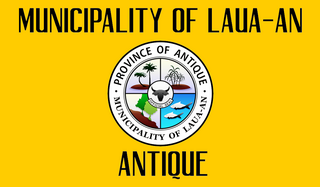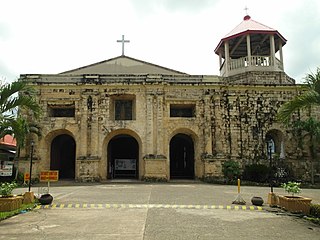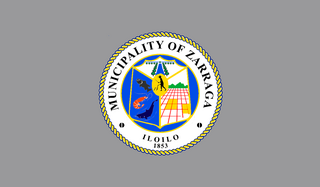
Buenavista, officially the Municipality of Buenavista, is a 2nd class municipality and the largest settlement in the province of Guimaras, Philippines. According to the 2020 census, it has a population of 52,899 people.

Balete, officially the Municipality of Balete, is a 4th class municipality in the province of Aklan, Philippines. According to the 2020 census, it has a population of 30,090 people.

Buruanga, officially the Municipality of Buruanga, is a 5th class municipality in the province of Aklan, Philippines. It is the farthest town of Aklan from its provincial capital. According to the 2020 census, it has a population of 19,357 people.

Libacao, officially the Municipality of Libacao, is a 3rd class municipality in the province of Aklan, Philippines. According to the 2020 census, it has a population of 28,272 people.

Nueva Valencia, officially the Municipality of Nueva Valencia, is a 3rd class municipality in the province of Guimaras, Philippines. According to the 2020 census, it has a population of 42,771 people.

Anini-y, officially the Municipality of Anini-y, is a 4th class municipality in the province of Antique, Philippines. According to the 2020 census, it has a population of 22,018 people. Making it 14th most populous municipality in the province of Antique.

Bugasong, officially the Municipality of Bugasong, is a 3rd class municipality in the province of Antique, Philippines. According to the 2020 census, it has a population of 34,676 people. Making it 8th most populous municipality in the province of Antique and fourth largest municipality in terms of land area, with a total area of 203.71 square kilometers.

Hamtic, officially the Municipality of Hamtic, is a 3rd class municipality in the province of Antique, Philippines. According to the 2020 census, it has a population of 52,685 people. Making it third most populous municipality in the province of Antique.

Laua-an, officially the Municipality of Laua-an, is a 4th class municipality in the province of Antique, Philippines. According to the 2020 census, it has a population of 26,580 people. Making it 12th most populous municipality in the province of Antique. Laua-an celebrates its Pahinis Festival every January.

Libertad, officially the Municipality of Libertad,, is a 5th class municipality in the province of Antique, Philippines. According to the 2020 census, it has a population of 17,507 people, making it the 17th most populous municipality in the province of Antique.

Patnongon, officially the Municipality of Patnongon, is a 3rd class municipality in the province of Antique, Philippines. According to the 2020 census, it has a population of 38,329 people.

Sebaste, officially the Municipality of Sebaste, is a 4th class municipality in the province of Antique, Philippines. According to the 2020 census, it has a population of 18,816 people. Making it 16th most populous municipality in the province of Antique.

Sibalom, officially the Municipality of Sibalom,, is a 2nd class municipality in the province of Antique, Philippines. According to the 2020 census, it has a population of 63,833 people. Making it second most populous municipality in the province of Antique and fifth largest municipality in terms of land area, with a total area of 201.30 square kilometers.

Valderrama, officially the Municipality of Valderrama, is a 4th class municipality in the province of Antique, Philippines. According to the 2020 census, it has a population of 19,971 people. Making it 15th most populous municipality in the province of Antique and the second largest municipality in terms of land area, with a total area of 273.79 square kilometers.

Dao, officially the Municipality of Dao, is a 4th class municipality in the province of Capiz, Philippines. According to the 2020 census, it has a population of 33,842 people.

Mambusao, officially the Municipality of Mambusao, is a 3rd class municipality in the province of Capiz, Philippines. According to the 2020 census, it has a population of 40,690 people.

Salcedo, officially the Municipality of Salcedo, is a 5th class municipality in the province of Eastern Samar, Philippines. According to the 2020 census, it has a population of 22,136 people.

Lambunao, officially the Municipality of Lambunao, is a 1st class municipality in the province of Iloilo, Philippines. According to the 2020 census, it has a population of 81,236 people.

San Miguel, officially the Municipality of San Miguel, is a 4th class municipality in the province of Iloilo, Philippines. According to the 2020 census, it has a population of 30,115 people.

Zarraga, officially the Municipality of Zarraga, is a 4th class municipality in the province of Iloilo, Philippines. According to the 2020 census, it has a population of 27,305 people.























